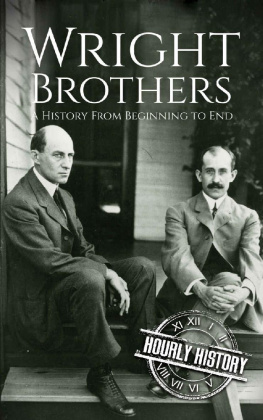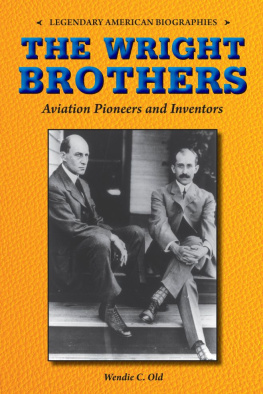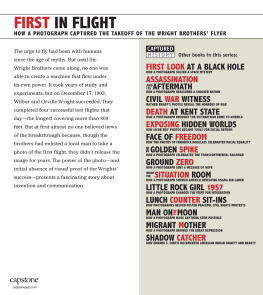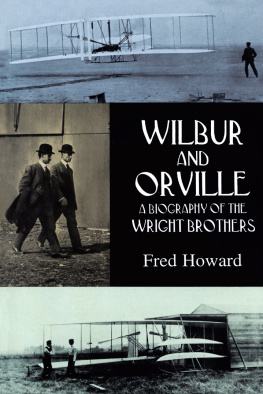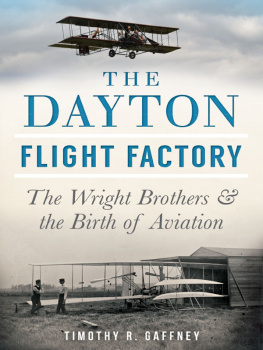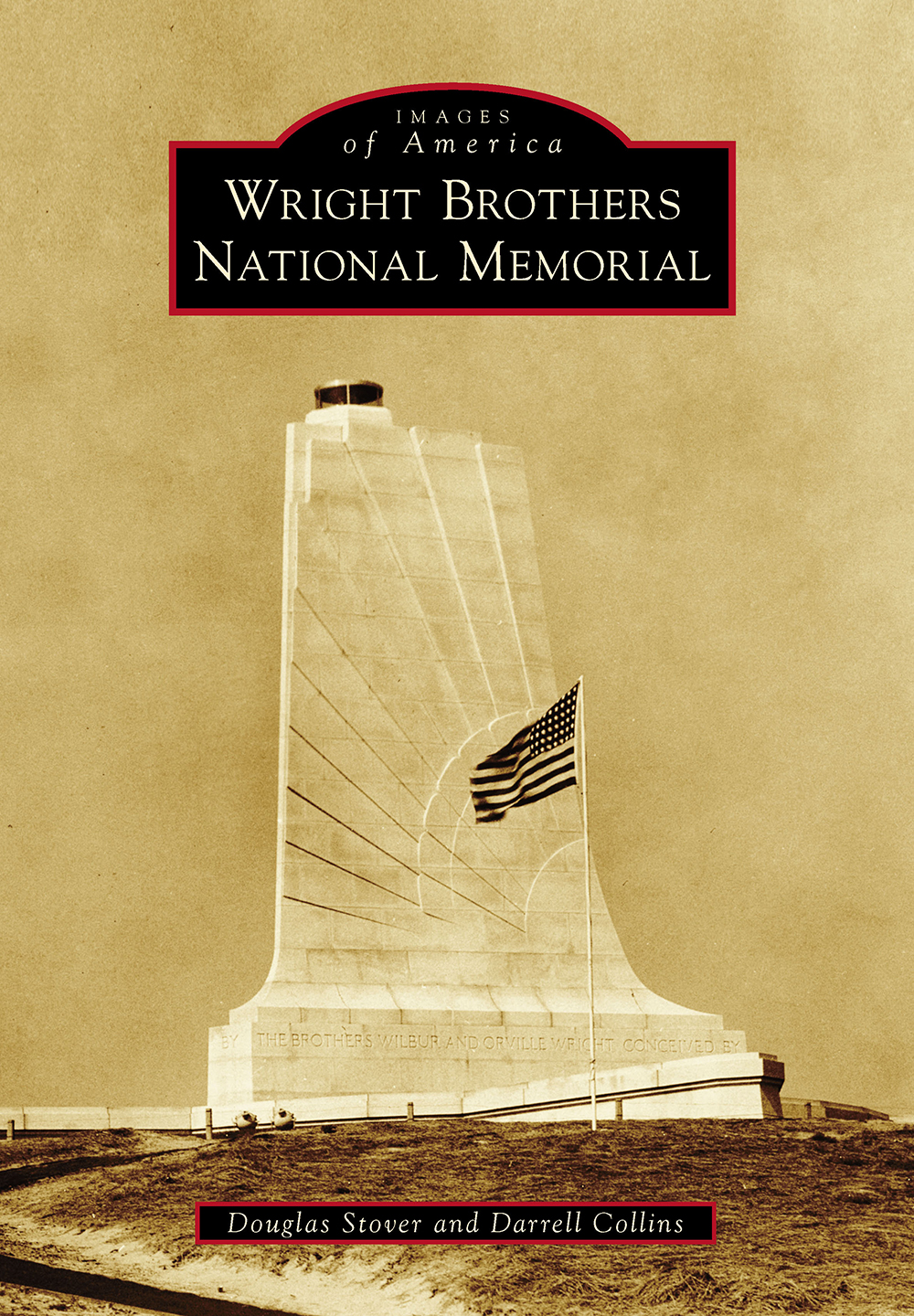
IMAGES
of America
WRIGHT BROTHERS
NATIONAL MEMORIAL
ON THE COVER: This 1962 photograph depicts the Wright Brothers National Memorial, Kill Devil Hills, North Carolina, nestled on a 90-foot-tall hill. (Courtesy of National Park Service, Wright Brothers National Memorial.)
IMAGES
of America
WRIGHT BROTHERS
NATIONAL MEMORIAL
Douglas Stover and Darrell Collins

Copyright 2019 by Douglas Stover and Darrell Collins
ISBN 978-1-4671-0426-5
Ebook ISBN 9781439668627
Published by Arcadia Publishing
Charleston, South Carolina
Library of Congress Control Number: 2019940812
For all general information, please contact Arcadia Publishing:
Telephone 843-853-2070
Fax 843-853-0044
E-mail
For customer service and orders:
Toll-Free 1-888-313-2665
Visit us on the Internet at www.arcadiapublishing.com
This book is dedicated to the memories of legendary volunteers Joe Hardman, Bud Brown, Jerry Raveling, and Father Billwho nearly have 75 years of combined service to the park.
CONTENTS
ACKNOWLEDGMENTS
We are pleased to make available this collection of historical images of the Wright Brothers National Memorial, Kill Devil Hills, North Carolina, with the help of many sources and research material from the National Park Service Outer Banks Group and the Outer Banks History Center. Special thanks go to Jami Lanier, cultural resource manager, National Park Service Outer Banks Group, for allowing access to the Wright Brothers National Memorial Collection of the National Park Service Archives. Special thanks are given to Tama Creef and Stuart Parks, archivists at the Outer Banks History Center, a regional archives and research library in Manteo, North Carolina.
We want to thank Caroline Anderson, editor at Arcadia Publishing, and the production staff for allowing us to research and write this book and working with us through all stages of publication.
Unless otherwise noted, all images used in this book come from National Park Service, Wright Brothers National Memorial.
INTRODUCTION
Time flies. It is hard to imagine that 2019 marks the 50th anniversary of the first moon landing. It was an event labeled by historians and scholars as mankinds greatest achievement, second only to the first powered flight at Kitty Hawk. It happened at a time when America needed it the most; the country was divided by the war in Vietnam and slowly recovering from the assassination of Pres. John F. Kennedy. The moon landing was the most watched television event of the 20th century. Over 600 million people around the world witnessed Neil Armstrong step foot on the moon and will forever remember the following immortal words: Thats one small step for a man, one giant leap for mankind. The age-old dream of mankind came true that hot summer night 66 years after the worlds first successful controlled, heavier-than-air powered flight.
Congress authorized the construction of the Kill Devil Hill Monument on March 2, 1927. It was transferred from the US War Department to the National Park Service on August 10, 1933, and was renamed the Wright Brothers National Memorial on December 4, 1953. The 428-acre national memorial site is located in Kill Devil Hills, North Carolina, Dare County, off US Route 158. Nearly 500,000 people a year visit the Wright Brothers National Memorial.
Two of seven siblings, Wilbur Wright was born in Millville, Indiana, on April 16, 1867, and Orville Wright was born in Dayton, Ohio, on August 19, 1871. Though they were the owners of a bicycle shop, the brothers had their sights on the sky and were determined to make technological advances in controlled powered flight. Inspired by famous glider Otto Lilienthal, who tragically died in a glider crash, the Wright brothers used gliders as a starting point.
To operate a glider, one needs regular breezes. With the help of the US Weather Bureau and the recommendation of American civil engineer and aviation enthusiast Octave Chanute, the brothers selected Kill Devil Hills, North Carolina, in the Outer Banks. The area met their list of criteria; it was an isolated, vegetation-free space with sand dunes and steady wind. Located four miles south of Kitty Hawk (the nearest settlement), Kill Devil Hills was the perfect location for the Wright brothers to perform their flying experiments. Though the brothers preferred experimenting in a nonpopulated area, it did make it more challenging to get supplies and thus were forced to return home and regroup at the end of every flying season. So from 1900 to 1903, Wilbur and Orville Wright split their time between their home in Dayton, Ohio, and their temporary camp in Kill Devil Hills.
The Wrights first arrived in Kitty Hawk, North Carolina, in the fall of 1900. On that brief trip, they tested only about 12 free glides, with Wilbur lying flat on the lower wing. They used Big Kill Devil Hill to facilitate the gliders takeoff. The Wright brothers were unsatisfied with the lift of the glider, so they constructed a larger one for their experiments in 1901.
In the summer of 1901, the larger glider had improved in some areas, like landing, but not all. After numerous tests, the lift generated by the wings was only a third of what they predicted using Lilienthals tables (coefficients of lift). Once back home, the brothers built a wind tunnel, which allowed them to test different shapes and airfoil curves of wings.
The 1902 glider featured a fixed, rear vertical rudder and improved wing design that gave them a vertical lift; however, there were still problems with lateral (roll) control, also known as wing warping. According to the National Park Service, between 1900 and 1902, the Wrights glided off [Kill Devil Hills] more than 1,000 times. At home in Ohio, the Wrights conducted experiments with propellers and began to build their 1903 flyer, which had a water-cooled vertical four-cylinder engine and a lightweight wooden glider for its body.
On September 25, 1903, Wilbur and Orville arrived at Kitty Hawk. There, the brothers assembled their 1903 machines engine and started their experiments. Unfortunately, in November, the propeller shafts broke twice, forcing the brothers to return to Dayton to repair parts. After making the necessary repairs and traveling back to North Carolina, on December 14, 1903, because of the lack of wind, the brothers tried launching the flyer off the side of Big Kill Devil Hill. They tossed a coin to determine who would make the first trial, and Wilbur won. What occurred that day was the first stall of a powered airplane; the flight only lasted 3.5 seconds and covered 105 feet. On landing, the undercarriage was damaged. It took three days to repair the damage.
On Thursday, December 17, 1903, at 10:35 a.m., with Orville Wright at the controls of the flyer, the world changed forever. The first successful controlled, heavier-than-air powered flight lasted 12 seconds and covered 120 feet. In addition to the brothers, five other people witnessed the momentous occasion. US Lifesaving Service crew members Adam Etheridge, Will Dough, and John T. Daniels, who took the iconic first flight photograph using Orvilles camera, were there. Also in attendance were area businessman W.C. Brinkley and local teenager Johnny Moore. After the first flight, the brothers made three additional trials. At 11:00 a.m., Wilbur made the second flight, 175 feet in 12 seconds. At 11:40 a.m., Orville made the third flight, 200 feet in 15 seconds. All the flights that morning reached a height of 12 to 14 feet off the ground. The fourth and last flight on December 17, 1903, was made by Wilbur Wright. He covered a distance of 852 feet in 59 seconds. With these successful flights, the Wrights not only changed the course of Kill Devil Hills and Kitty Hawk forever but also the world.
Next page

